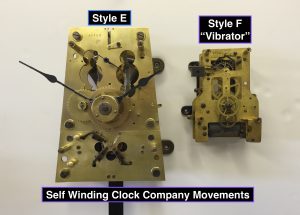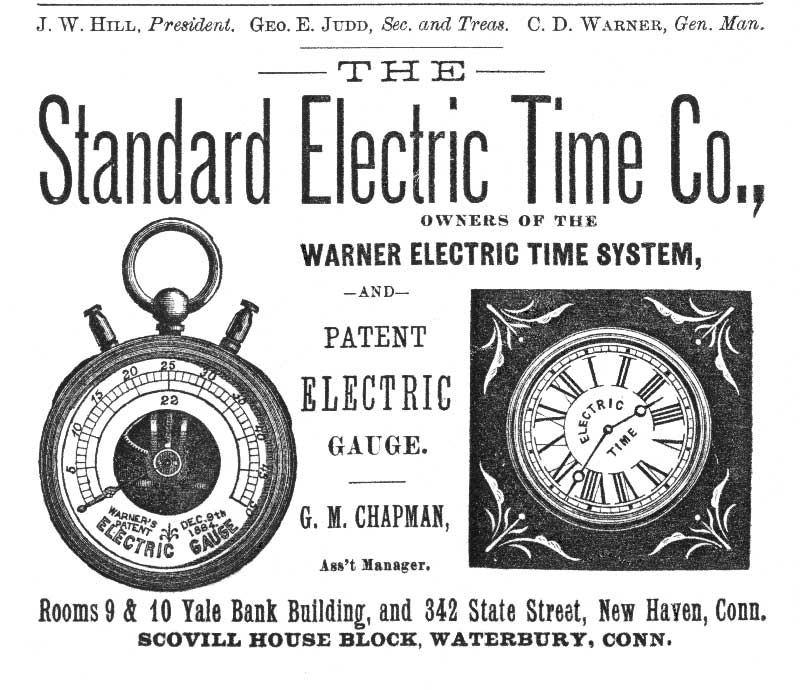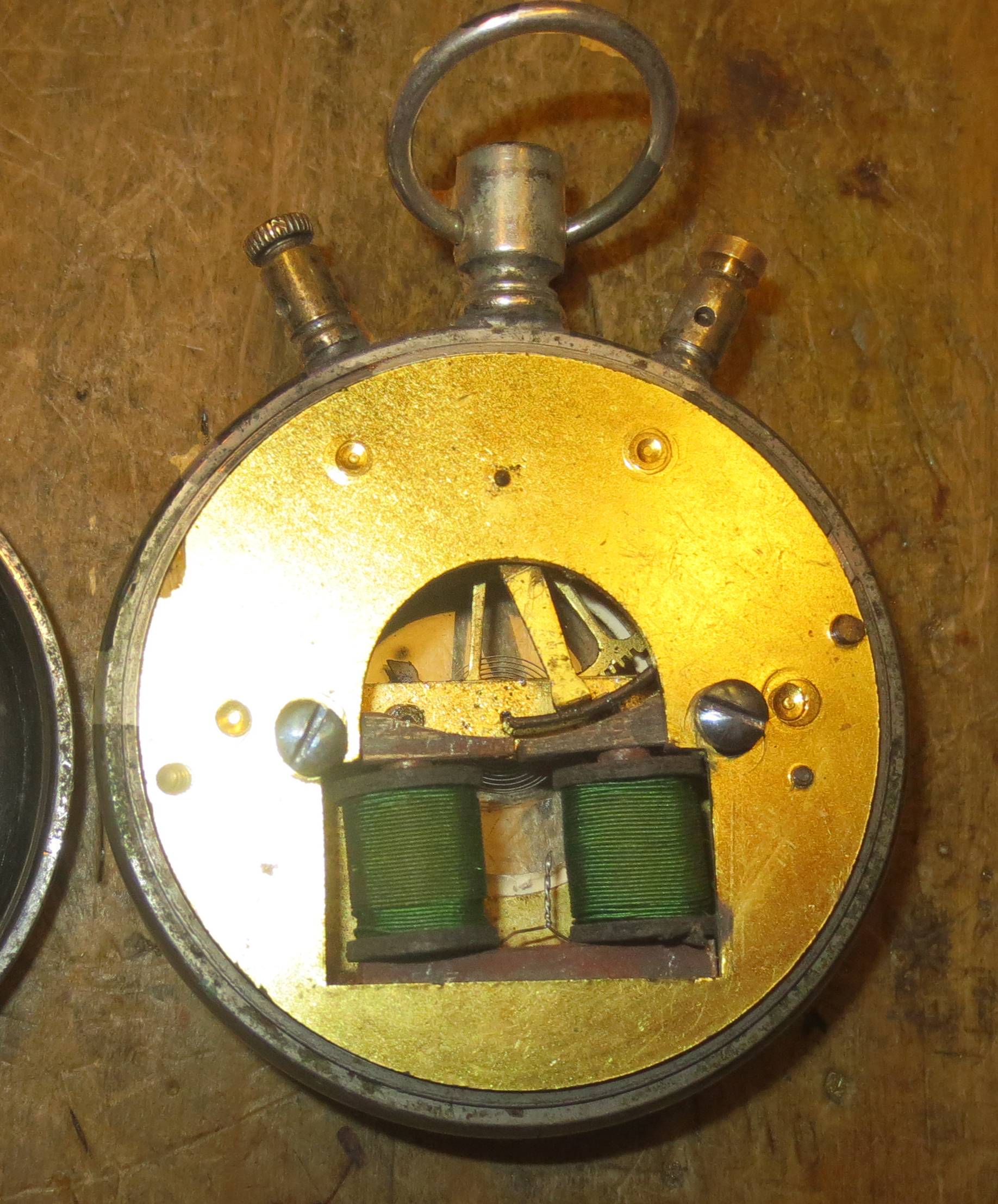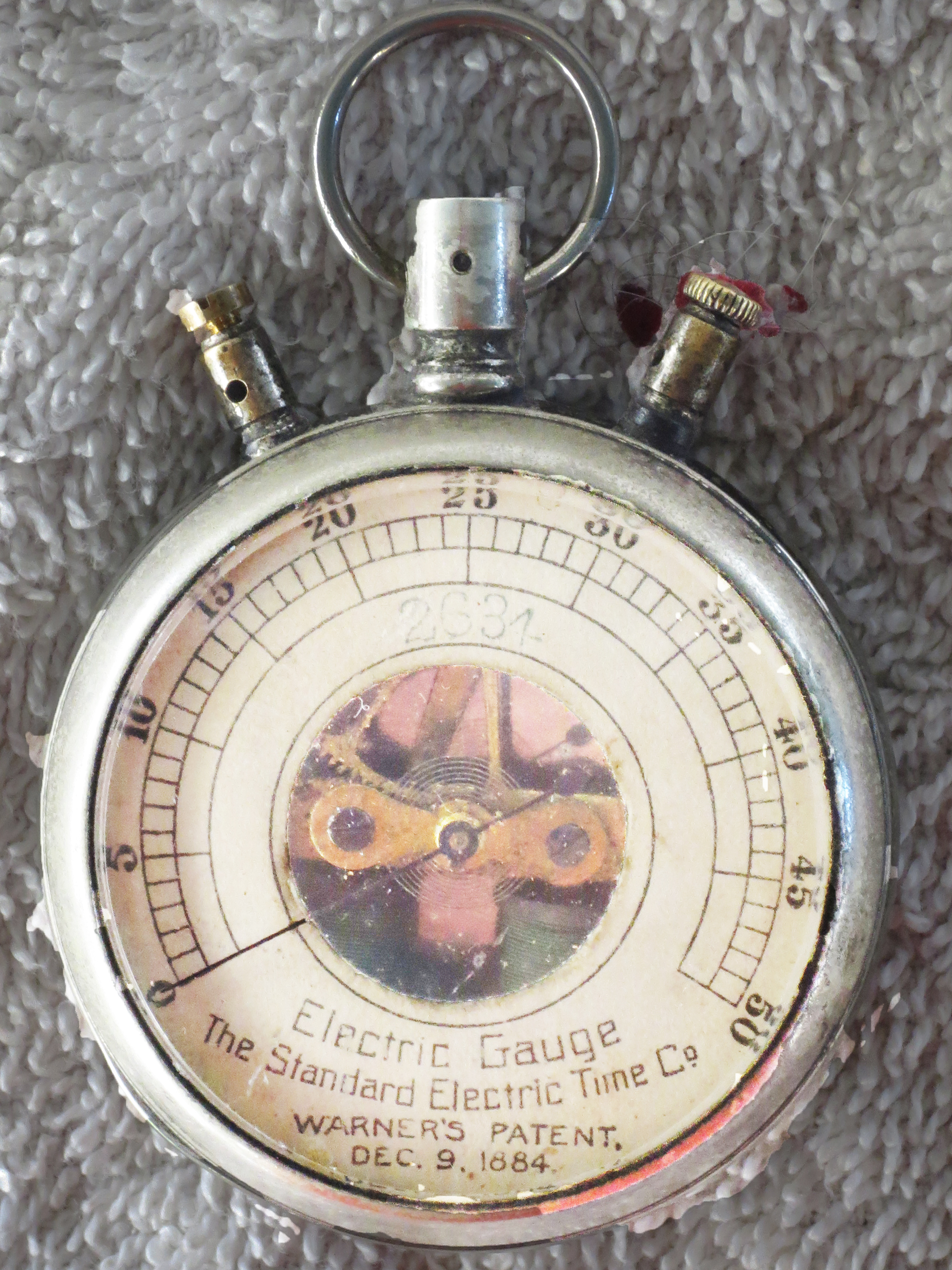In the late 1920s, three classes at the University of Sioux Falls in South Dakota pooled their contributions and bought a state-of-the-art IBM clock system for the school. The clock is in perfect condition and hangs in the lobby of the administration building. Below is correspondence from Ernie Jenson, member of NAWCC Chapters 133 and 190, to the University of Sioux Falls concerning their IBM Master Clock which they sent to Ernie for service.

General Information –I did not find any problem with the clock except the arm at B arrow needed adjusting . A arrow points to the pivot of the arm that advances the wind spring one tooth of the wind wheel. When you close the solenoid with 12 V DC or by hand and then let the solenoid open, the ratchet arm should move forward a little more than one tooth and then relax to exactly one tooth.
B arrow points to the pivot point of the arm that determines how far the ratchet arm will relax to grab the next tooth. If you loosen the screw and move that arm down as far as touching the coil, that is too far. It should be adjusted so that the ratchet grasps a little more than one tooth and then relaxes to exactly one tooth.
Every minute when the second hand points straight up, the solenoid should close and advance the wind wheel one tooth. When this clock was first installed it closed a relay that sends this same pulse to maybe 50 secondary clocks throughout the school. Place the second hand to point straight up when the contact closes for the proper appearance. There is a second contact on the back side of the black switch plate. This closes 5 seconds after the wind and time pulse to ring the buzzers to start or dismiss a class. The big programmer in the center of the clock case would determine which minute of the day to allow the pulse through to the buzzer. This clock is still in excellent condition and still ready to run any number of secondary clocks and buzzers or bells providing additional power and a relay was provided to do the job for many clocks. It is nearly 100 years old and shows very little wear!
Problem Solving– If the clock stops, then the first step is to see if the wind spring is wound. The wind spring is good for a number of hours before it is completely unwound. This permits the clock to keep running for most power interruptions. To diagnosis the cause of the problem, it is possible to reach behind the face and squeeze the solenoid together to get one minute’s power each squeeze. If you are familiar with the location of the ratchet activated wind wheel, then with the pointer finger reach in the right side of the clock between the plates and advance the wind wheel by pulling downward and listening to the clicking of the ratchet. If unwound, it can be advanced one rotation; if wound it will not advance and no clicking will be heard. The wind spring is on the lowest arbor in the clock works and centered between the plates. It is the wheel in the center of the picture midway between the plates and the arrows. One should hear the solenoid close on the minute when the second hands points straight up at 60. If there is not a solenoid closing then there is an electrical problem. The contact is dirty or the power supply is failing to deliver a half amp at 12 VDC. Maybe the contact arm is sticky and not dropping on the cam properly. There is a stop pin on the wind wheel and a stop pin on the going wheel. When completely wound these two pins should contact each other. If partially unwound the two pins should slowly move towards each other as one tooth of the wind wheel is more than one tooth on the running wheel. When the clock is completely wound, sometimes the solenoid will close but the ratchet can’t grasp the next tooth because the pins on the two wheels hit each other first preventing the ratchet reaching the next tooth.
Installing the clock– It will be necessary to set the clock in beat again after adjustments have been made and the pendulum may need to be adjusted a tiny bit as the clock may run a little slower or faster than before. The distance from the crutch is now a little closer than before to get the most energy to the pendulum. The pendulum is now swinging a little further than before. The little nut on the crutch will need to be adjusted a tiny bit to get it perfectly in beat (equal time between the ticks). Position the minute hand so it is exactly on the minute when the solenoid clicks for appearance.
Note: Some Master Clocks have a button at the bottom of the case, the wind button. Each push of the button winds the clock enough for one minute. The proper way to start the clock when there is a long power failure and the clock is completely unwound, is to push the wind button a few times so the spring has enough power to keep the clock running when one pushes the pendulum gently to start the clock. Otherwise it may not start ticking until it has been started a few times and the second hand has passed 60 and the solenoid has closed delivering the wind pulse.
Since I could not test the clock with the original power supply, I used a 12 VDC power supply. I used it for the 2 weeks that I tested the clock. It ran perfectly with the use of this power supply. If you suspect yours, use the one enclosed.
-Ernie Jenson FNAWCC




